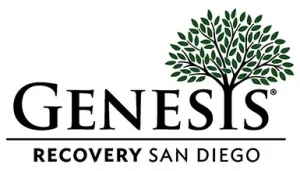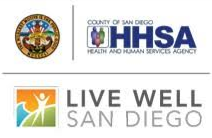Most people who use drugs don’t become addicted. For those that do, it doesn’t happen overnight. It might take weeks, months, or years depending on the person and the drugs of choice. Heredity, gender, access to drugs, and socioeconomic status all play a part. It’s different for everyone. I started out as a binge drinker and drank heavily for years but never suffered serious withdrawals and never physically needed it to get through a day. I used all manner of drugs for over a decade and although I was psychologically addicted, it wasn’t until heroin that I became physically addicted to a substance. For many people I know, the downward spiral happened much more quickly.
Addiction is a progressive disease that only gets worse over time. It becomes a cycle with identifiable stages. Nora Volkow is the director of the National Institute on Drug Abuse (NIDA) and is considered one of the leading experts in the field. She and other researchers have broken up the cycle of addiction into three distinct phases: binge/intoxication, withdrawal/negative affect, and preoccupation/anticipation. People progress through this cycle at different rates but the more it repeats, the more severe the consequences become.
This model of the addiction cycle revolves around four types of behavior: impulsivity, positive reinforcement, negative reinforcement, and compulsivity.
- Impulsivity is giving in to temptation without considering the consequences. A person may try a drug or a drink for the first time without thinking about what could happen.
- If the feelings and experiences were enjoyable then using the substance is positively reinforced and that person is more likely to do it again.
- On the other hand, that person may have used a substance to feel relief from negative emotions like stress or depression. If the experience made the person feel better, then it was negatively reinforced and he or she is more likely to do it again.
- Compulsivity, in this case, would be repeating the drug use over and over regardless of any adverse consequences and in inappropriate situations. Having a natural inclination to impulsive and compulsive behavior increases the risk of being caught up in the cycle when using addictive substances.
The binge/intoxication phase is like Pavlov’s dog. In that famous experiment, Ivan Pavlov was measuring the salivation response of dogs when being fed. He found out that a dog would salivate in response to stimuli that it learned to associate with being fed, not just the food itself. The dog was conditioned to expect food anytime it experienced the associated stimuli.
The first phase of the addiction cycle works in the same way. All addictive substances create spikes in dopamine release and produce pleasurable feelings, affecting the brain’s reward system. With repeated use of the drug, the brain learns to associate the pleasure it produces with external stimuli as well. Before the drug is even used, those pleasant feelings created by it are triggered by people, places, things, and even mood and states of mind. A house you use. Friends you use with. Something as simple as a plastic straw you see at a fast food place that is the kind you use to snort drugs with. When I was dope sick all day and my dealer finally returned my text to arrange a meet, my palms would start sweating. I would get butterflies in my stomach, have some energy, and immediately start to feel a little better. My brain knew it was about to get what it most wanted and released some dopamine before I even got high. Over time, these stimuli start to produce strong cravings for the substance that persist into recovery and can cause a relapse. That’s why you hear rehab counselors and members of NA and AA tell you to avoid people, places, and things that were a part of your active addiction. After naturally rewarding behavior like eating or sex, dopamine release stops but addictive substances continue to increase, which causes compulsive drug seeking.
Dysphoria is the opposite of euphoria. In the withdrawal/negative affect phase, users end up no longer taking drugs to achieve euphoria but to avoid dysphoria. With extended drug use, people will start to suffer withdrawal symptoms when they are unable to get enough of the substance. This happens for two reasons. First, the amount of dopamine released by the same dosage of drugs steadily decreases with consistent use. You need to take more and more to achieve the same effects. This impairment of the reward system results in less pleasure derived from naturally rewarding experiences as well because they are a part of the same system. Food, sex, or hobbies will no longer provide joy. Secondly and concurrently, the brain becomes more reactive to stress, what’s called the “anti-reward” system. This hyperactive stress response drastically increases negative emotions and physical discomfort.
At first, heroin was fun. Then I needed it to have fun. Then I needed it to be able to do anything at all. If I couldn’t get it, I was in bed all day. I didn’t want to move, couldn’t eat, didn’t want to talk to anyone, and felt physically sick. The only things I might be able to take care of were directly related to obtaining the drugs I needed. Heroin made me feel normal again but it didn’t always make me feel high. It was no longer about gaining a positive, it was about the absence of a negative.
The preoccupation/anticipation phase is when an addict seeks out drugs after the effects have worn off. In this phase the prefrontal cortex region of the brain that controls higher level, cognitive processes is affected. The disruption to dopamine and glutamate regulation that occurs in this region impairs decision making, emotional control, prioritizing tasks, and impulsivity, just to name a few. This helps explain why addicts develop cravings and become obsessed with getting their next fix. With decision making compromised, addicts will engage in risky behavior in the pursuit of more drugs. They will continue to use despite an accumulation of negative consequences. Even with a genuine desire to stop and promises and attempts to do so, addicts cannot stop. Some of these neurological changes happen on the subconscious level and addicts won’t realize what is happening in their minds. It becomes difficult to see how bad things have gotten. I know that for me, my entire day revolved around getting and using more drugs. As soon as there was only a little left and the effects were wearing off then the anxiety and fear started and anything else that I may have been thinking about was overshadowed by what I needed to do to stay well. Nothing else was important, it was all secondary. Looking back now it’s hard to believe all the things that I did and what I put myself through. Things that I would normally never do.
Depending on the severity and frequency of drug use, this cycle can repeat several times a day or over the course of weeks. No matter how long it takes it gets worse the more it is repeated. It creates lasting neurological changes in the brain and that’s why breaking out of it is so difficult and why recovery takes time. Simple abstinence is not enough to overcome the cravings and obsession to keep using. Addicts need help to stay clean and avoid relapse. Willpower alone doesn’t work when decision making is impaired and drugs or alcohol have hijacked the brain’s reward system. Addicts will do crazy, dangerous things to avoid having to experience withdrawal symptoms that seem too much to handle.
In my time in recovery, I’ve learned that addiction is not the result of a weakness of character or some kind of moral failing. Intelligent people who know right from wrong, have good hearts, and everything to lose are just as susceptible as anyone else. In the midst of a drug epidemic, the better understanding the public has of the disease of addiction, the more acceptance of it there will be. That leads the way to better and more mainstream prevention strategies and treatment options for addicts. In the absence of a cure, prevention and treatment provide the best opportunities for breaking the cycle of addiction.

